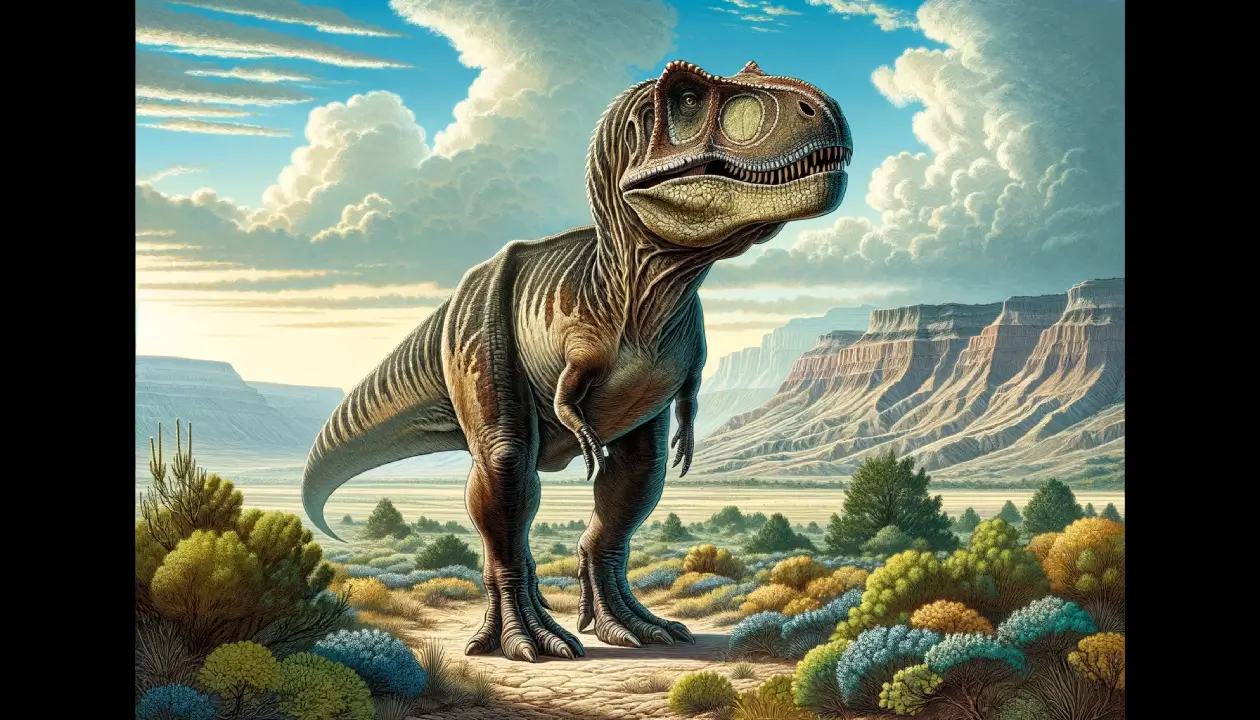In the vast, sun-baked sands of western New Mexico, a groundbreaking discovery has emerged. Paleontologists have identified a new species, Tyrannosaurus mcraeensis, which could be the closest known relative to the legendary Tyrannosaurus rex. This revelation not only adds a new member to the Tyrannosaur family but also reshapes our understanding of their evolutionary journey.
Background
The Tyrannosaurus Legacy
The Tyrannosaurus family, renowned for their size and predatory prowess, has captivated scientists and enthusiasts alike for decades. At the heart of this family stands the Tyrannosaurus rex, often hailed as the king of the dinosaurs. Its immense size, ferocious appearance, and role in popular culture have made it a symbol of prehistoric life. Yet, until now, the origins and evolutionary history of this giant predator remained shrouded in mystery.
The Discovery
The journey of Tyrannosaurus mcraeensis from an obscured fossil to a recognized species is a tale of scientific inquiry and perseverance. Nestled in the challenging landscapes of New Mexico, a discovery awaited recognition – a discovery that would challenge existing perceptions in the world of paleontology.
- Initial Find: A partial skull discovered in the rugged terrain of New Mexico, initially classified as a T. rex.
- Reevaluation: With advancements in technology and paleontological techniques, scientists took a second look at this intriguing find.
- Modern Methodologies: Using detailed comparative analysis and sophisticated scanning methods, researchers began to notice subtle yet significant differences from the known T. rex specimens.
This reclassification marks a pivotal moment in paleontology, leveraging cutting-edge science to peel back layers of prehistoric life. It’s not just about finding bones; it’s about piecing together the story of Earth’s ancient inhabitants, a story that continues to evolve with each new discovery.
Key Features of Tyrannosaurus mcraeensis
The Tyrannosaurus mcraeensis, while similar in stature to its famed cousin T. rex, exhibits distinct physical characteristics that set it apart:
- Size: Approximately 12 meters long, rivaling the T. rex in sheer size.
- Skull Structure: Notably more slender skull with less pronounced ridges above the eyes.
- Jawbone: Unique curvature and shape, differing from the robust jaws of T. rex.
These features don’t just add a new species to the Tyrannosaur family; they provide crucial clues to the evolutionary puzzle of these prehistoric giants.
The Research Team’s Findings
The team’s meticulous examination revealed fascinating details:
- Subtle Differences: The researchers highlighted the importance of minor skeletal variations in distinguishing species.
- Comparative Analysis: Each bone of T. mcraeensis was carefully compared to numerous T. rex specimens, affirming its unique identity.
This careful study demonstrates the importance of detailed analysis in paleontology, turning minute differences into significant discoveries. The team’s work underscores the dynamic and ever-evolving nature of our understanding of the prehistoric world.
Controversy and Debate
The discovery of Tyrannosaurus mcraeensis has sparked a lively debate among scientists. The crux of the controversy lies in whether this specimen represents a distinct species or is simply a variation of the well-known T. rex.
- Skeptical Views: Some experts argue that the differences observed in T. mcraeensis could be attributed to individual variation within T. rex specimens or different growth stages.
- Support for Distinctiveness: Proponents of the new classification maintain that the consistent and specific differences in skeletal features are significant enough to warrant a separate species designation.
This debate highlights the challenges in paleontology of interpreting fossil records, where subtle differences can lead to big conclusions.
Evolutionary Significance
The identification of Tyrannosaurus mcraeensis has profound implications for our understanding of tyrannosaur evolution:
- Origin Theories: This discovery supports the theory that tyrannosaurs may have originated in southern North America, rather than the previously believed northern regions.
- Timeline Impact: The existence of T. mcraeensis suggests that giant tyrannosaurs evolved earlier than previously thought, altering the timeline of tyrannosaur evolution.
By reshaping our view of where and when these colossal creatures roamed, T. mcraeensis not only enriches our knowledge of the past but also guides future explorations in the field of paleontology.
Conclusion
The uncovering of Tyrannosaurus mcraeensis marks a significant milestone in dinosaur research. It challenges our previous understanding of the Tyrannosaur family tree and opens new avenues for exploration into the ancient world of these magnificent creatures. This discovery not only adds to the diversity of known dinosaurs but also enhances our grasp of their evolution and spread across ancient landscapes.
Ongoing research continues to delve deeper into the mysteries of the Tyrannosaur lineage. With each new find, we come closer to piecing together the complex puzzle of prehistoric life, shedding light on the dynamic and ever-changing nature of our planet’s history.
Additional Information
For those eager to dive deeper into the fascinating details of the Tyrannosaurus mcraeensis discovery, the full research study is accessible to the public. This comprehensive paper offers an in-depth look at the scientific journey behind this significant find.
- Accessing the Study: The complete research paper, rich with scientific data and analysis, can be found at Nature Scientific Reports. This link leads directly to the study, allowing readers to explore the methodologies, findings, and implications of this discovery.
- Fossil Exhibition: Information about where the T. mcraeensis fossil is exhibited can be typically found through the website of the museum or institution housing the specimen. These venues often provide opportunities for the public to view this remarkable piece of prehistoric life and learn more about the world of dinosaurs.
This study not only adds a new dimension to our understanding of the Tyrannosaur family but also serves as a testament to the ongoing advancements in paleontology. By making these resources readily available, the scientific community continues to foster curiosity and education in the field of dinosaur research.





